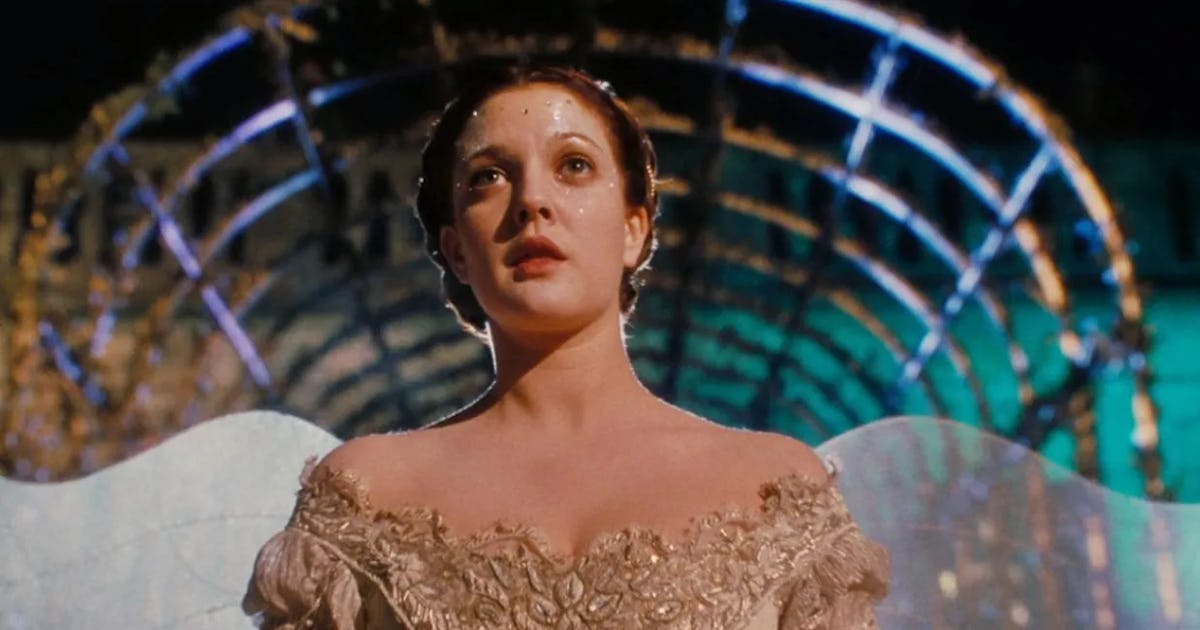Everyone loves a good, old-fashioned fairy tale. There’s just something euphoric about escaping into a fantasy world, leaving all of your real-life problems behind, and immersing yourself in a place where anything is possible. Not to mention, there are all of the important life lessons that fairy tales can teach us as well: be wary of strangers, be kind to others, don’t touch sharp, pointy spindles on spinning wheels. (OK, that last one should kinda go without saying, but you get the idea.) And while there have been many (many, many) live-action adaptations of various Disney classics throughout the years, one of my all-time favorites has to be the 1998 film Ever After, which presents a unique, historical depiction of the story of Cinderella.
Starring Drew Barrymore in the titular role, the movie takes place during the French Renaissance and follows the journey of a young girl who is forced into servitude at the hands of her cruel stepmother in the wake of her father’s death. Many aspects of the story parallel its animated counterpart, except in one very big way: zero magic is involved. There’s no fairy godmother, no pumpkins turning into carriages, no mice morphing into human form — the supernatural elements of the story are all gone. But while that change-up may initially sound like a huge mistake, I’m here to argue that the lack of magic actually works in this film’s favor.
It’s More Relatable
Magic is great, but given its lack of existence in the real world, it’s not something audiences can really relate to because we have no firsthand experience with it. That’s a big part of what makes it so exciting, but it can also create a distance between the viewers and the characters since we can’t fully understand what they are going through. But Ever After changes that dynamic. Instead of introducing supernatural aspects to the story, it dives into extremely relatable topics like love, friendship, grief, and jealousy.
In the animated iteration of Cinderella, we are given zero information as to why the evil stepmother is so cruel to her kind and caring stepdaughter. I always wrote it off as if she were simply a mean-spirited person. End of story. However, Ever After suggests that there’s more to this woman than meets the eye. She’s still cruel, but it appears to stem from grief and jealousy — grief over the loss of her husband, whom she actually seemed to love, and jealousy over how much more he seemed to love his daughter than her. It doesn’t excuse her behavior or actions by any means, but it definitely helps to explain her motivations and give the character some depth. It doesn’t make me like her, but it also doesn’t make her hate her quite as much, which one could argue is a type of miracle in itself.
Magic Is Fun, But Can Be Distracting
So many of today’s live-action depictions of Disney films involve some type of magical element. Ursula performs a magical spell to give Ariel legs and steal her voice in The Little Mermaid; the young prince and his servants are placed under a curse by an enchantress in Beauty and the Beast; Aladdin befriends a genie and magic carpet. I could go on and on. And even though those mystical aspects are fun and exciting, they can also be used as a crutch at times, leaving less room for character development and deeper storylines, as I mentioned earlier regarding the evil stepmother.
Granted, you could argue that these are kid films and don’t necessarily need deeper meanings to be enjoyable. And you’re right. But that doesn’t mean that every depiction of every Disney film has to follow that magic-centric formula. Because sometimes an underlying message or lesson can be just as meaningful, if not more so, than supernatural hijinks.
It Proves That Sometimes Real Life Can Be Just As Magical
I’ve always enjoyed certain aspects of Cinderella, but one part of the story never sat well with me: how the prince could only figure out who Cinderella was by having her foot fit into the glass slipper. Was this guy’s memory so terrible that he really couldn’t narrow it down better by himself? I’m sorry, but that’s an immediate red flag for me, my friend. Him not being able to recognize the woman he supposedly fell in love with if she’s wearing rags instead of a ballgown kinda takes away some of the romance from the situation, to be honest. But Ever After skips over that nonsense. His inability to recognize her as the servant who threw an apple at him at the start of the film is easier to digest since it highlights the unfairness in class structure that existed during that time. (Royalty would never look a servant in the eye.)
Sure, the shoe still gets left at the ball, but it isn’t used as a means for Henry to find her. He slips it on her foot at the end as a way of showing his commitment to her and accepting her as the strong, independent, free-thinking woman that she is. That is so much sexier than haphazardly shoving a slipper on any/every woman’s foot in the kingdom.
Ever After manages to be captivating all on its own without all the other bells and whistles, proving that you don’t need magic to create a fairy tale masterpiece and deliver a happily ever after.
Disclaimer: This content was automatically imported from a third-party source via RSS feed. The original source is: https://www.scarymommy.com/entertainment/ever-after-retrospective-live-action-fairy-tale-movie. xn--babytilbehr-pgb.com does not claim ownership of this content. All rights remain with the original publisher.



